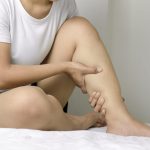
Does varicose veins harm the skin?
Many unwelcome symptoms are brought on by varicose veins. Venous insufficiency is a vein disorder that is characterized by discomfort, irritation, edema, and a sensation of heaviness in the leg. These signs may point to a problem with the tiny valves in your leg veins, which may prevent blood from reaching your heart as it ought to. Your leg’s blood then collects as a result. Skin damage is another obvious but sometimes ignored indication of vein disease. It is also caused by it.
Sadly, venous insufficiency-related skin damage may initially be mistaken for a dermatological condition. Most people think that their bruised leg or foot would ultimately become colorless. A vein specialist should examine the veins to determine the underlying cause of the damage, which is vein disease, if the skin continues to thicken or get darker.
What causes skin damage in vein disease?
Venous stasis dermatitis or venous eczema are terms used to describe the skin damage brought on by venous insufficiency. As blood is clogged in the veins, fluid spills into the surrounding tissue, causing the vein to enlarge. Your skin is also impacted by the extra fluid, primarily because the fluid accumulation stops nutritious, oxygenated blood from getting to the skin. Your skin cannot mend adequately without oxygen.
Orange or brown blotches on the lower legs and feet, often known as cayenne pepper shots, are the first indication of skin damage. This discoloration happens when microscopic capillaries in the vein burst due to increased blood pressure, rendering the skin red or brown.



